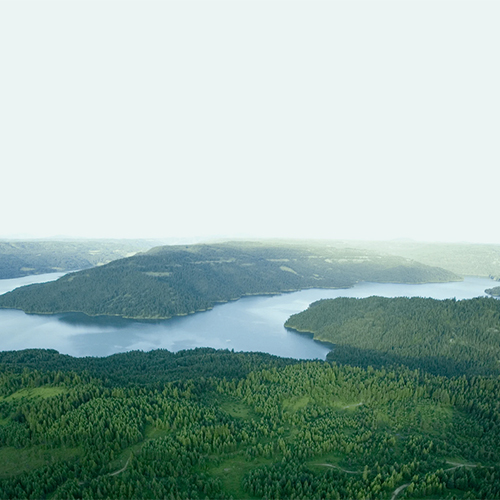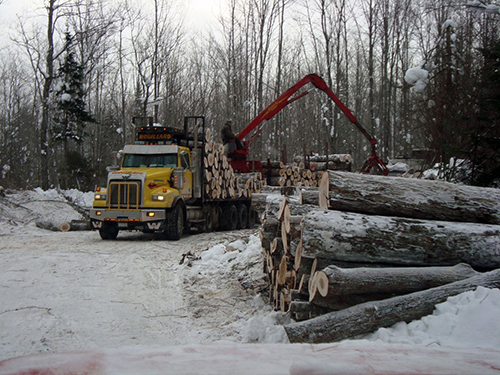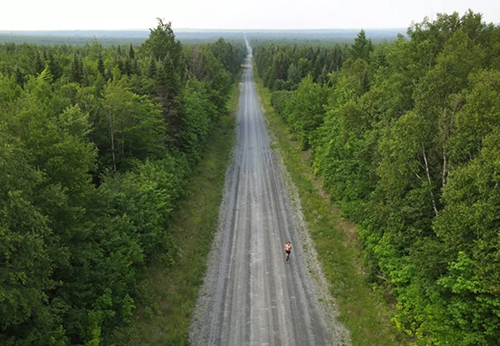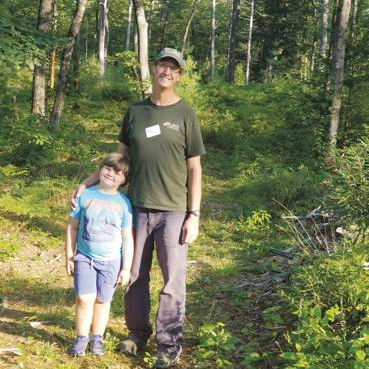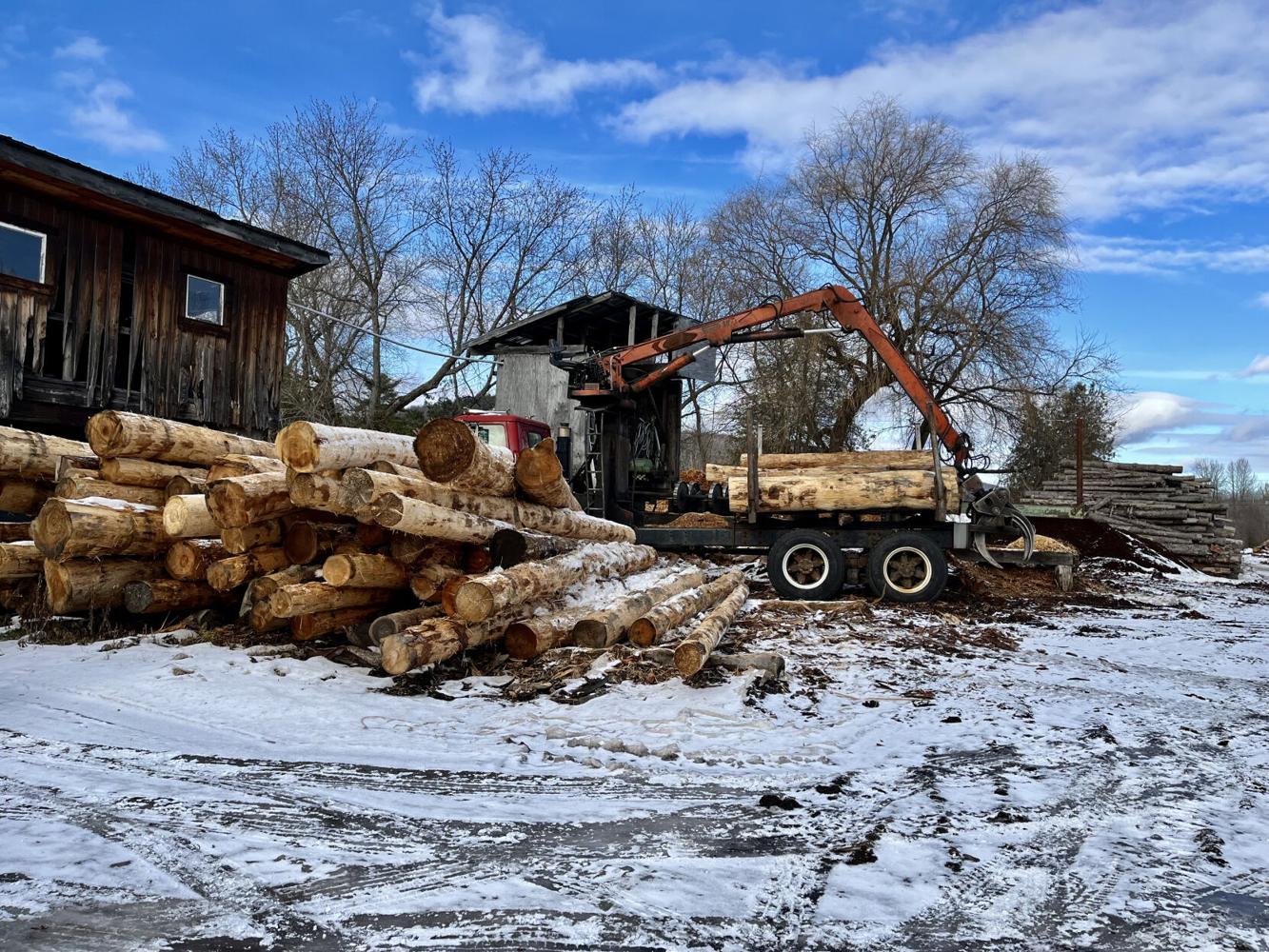Your Results
of Mills’ Wood Fiber From
Non-Controversial Sources1
Wood is sourced from jurisdictions
with a low risk of illegal activity.
Why Does This Matter?
These wood products can be traced to the U.S. or other regions through legality-focused standards to ensure they are legally sourced.
of Mills’ Wood Fiber From
Responsible Sources1
Wood is acquired according to an independently certified, responsible procurement system or is harvested from regions with regulatory systems in place to implement forestry best management practices.
Why Does This Matter?
These products are sourced utilizing practices that protect the forests and the waters that flow through them.
Mills ensure that the wood they use is sourced from forests that comply with forest best management practices (e.g., protection of water quality, endangered species, etc.)
of Mills’ Wood Fiber From
Certified Forests1
Wood is acquired from lands with one or more forest management certifications.
Why Does This Matter?
These products come from forests managed according to sustainable practices defined by an independent body, such as the Sustainable Forestry Initiative or Forest Stewardship Council.
The wood can be tracked through the supply chain using chain-of-custody.
Certified Forestland32
22% of all forests in this region have a forest management certification.
Why Is This Number So Low?
• Public lands are generally not certified
• Small family landowners also unlikely to be certified
of Mills’ Wood Fiber From
Non-Controversial Sources1
Wood is sourced from jurisdictions
with a low risk of illegal activity.
Why Does This Matter?
These wood products can be traced to the U.S. or other regions through legality-focused standards to ensure they are legally sourced.
of Mills’ Wood Fiber From
Responsible Sources1
Wood is acquired according to an independently certified, responsible procurement system or is harvested from regions with regulatory systems in place to implement forestry best management practices.
Why Does This Matter?
These products are sourced utilizing practices that protect the forests and the waters that flow through them.
Mills ensure that the wood they use is sourced from forests that comply with forest best management practices (e.g., protection of water quality, endangered species, etc.)
Why Does This Matter?
These wood products can be traced to the U.S. or other regions through legality-focused standards to ensure they are legally sourced.
Why Does This Matter?
These products are sourced utilizing practices that protect the forests and the waters that flow through them. Mills ensure that the wood they use is sourced from forests that comply with forest best management practices (e.g., protection of water quality, endangered species, etc.)
Why Does This Matter?
These products come from forests managed according to sustainable practices defined by an independent body, such as the Sustainable Forestry Initiative or Forest Stewardship Council. The wood can be tracked through the supply chain using chain-of-custody.
of Mills’ Wood Fiber From
Certified Forests1
Wood is acquired from lands with one or more forest management certifications.
Why Does This Matter?
These products come from forests managed according to sustainable practices defined by an independent body, such as the Sustainable Forestry Initiative or Forest Stewardship Council.
The wood can be tracked through the supply chain using chain-of-custody.
Certified Forestland32
22% of all forests in this region have a forest management certification.
Why Is This Number So Low?
• Public lands are generally not certified
• Small family landowners also unlikely to be certified
Regional
Forestry Facts North
The Northeast is the nation’s leading region in forest certification. Wisconsin and Minnesota have the highest state percentages of certified forest (46%), followed by Maine (45%).51
Landowners in the eastern U.S. often prefer to establish new timber stands by promoting natural regeneration rather than by intentionally planting specific trees.52
This is often a function of the biological growth characteristics and most effective silvicultural systems of the tree species in this region.
There are an estimated 4.7 million family forest owners across the 20 states in the region defined by the U.S. Forest Service as the northern U.S. Collectively, family forest owners control about 55% of the forestland across the northern U.S.53
The Northern Forest covers 26 million acres and is the largest continuous forest east of the Mississippi. More than 80% of the Northern Forest is privately owned. In the North, where there is a higher population density and high demand for housing developments, there is incentive for private forest owners to sell or subdivide their land. Still, much of the Northern Forest remains intact.54
With only 18% of total land area, the North supports 32% of the nation’s timberland. In the North, one in six acres of forestland (16%) is afforded some form of protected status.55
U.S. timberland growing stock volume has increased by 60% since 1953, from 615 billion to 985 billion cubic feet, even though U.S timberland area increased by only 1%. Most regions in the U.S. have seen this upward trend, with the sharpest increase, 160%, in the North.56
Maine has an estimated 17.5 million acres of forestland. Of that, around 440,862 acres are harvested or thinned annually – about 2.5%.57
Wisconsin’s forests hold about 1.2 billion metric tons of carbon. This equates to the annual carbon emissions from 491 million homes’ energy use.58
Learn More North Region
Frequently Asked
Questions
- Sustainable Forestry
- Forestry Assurances
- Carbon + Climate Change
What is sustainable forestry?
The UN Food and Agriculture Organization (FAO) defines sustainable forest management as: “The stewardship and use of forests and forestlands in a way, and at a rate, that maintains their biodiversity, productivity, regeneration capacity, vitality, and their potential to fulfill, now and in the future, relevant ecological, economic, and social functions, at local, national, and global levels, and that does not cause damage to other ecosystems.”
How many seedlings do working forests plant each
year as compared to the number of trees you harvest?
The forest sector replants over 783 million seedlings per year (CINTRAFOR Research, 2021). According to research by the University of Washington, 23 seedlings are planted per thousand board feet of lumber produced. The rate of replanting varies by region, species, and other factors so there’s not an exact tree for tree figure. It ranges from two to five seedlings per tree harvested.
At what age do you typically harvest your trees and how
does that vary by region?
Timber takes between 25 and 100 years to mature. It varies widely by species and geographic region. For example, a loblolly pine in the U.S. Southeast can be harvested after 25 to 30 years but a ponderosa pine in the West may take 50 to 100 years to mature. 17
If more wood is used in products, does the size and health of the forest decrease? Is deforestation a concern in the U.S.?
First, deforestation is defined as changing from a forest to a non-forest use. Urbanization, not the production of forest products, is the single biggest threats facing U.S. forests today. While landowners harvest timber from their lands, they typically also regenerate that timber and keep forests forested, especially if they can find readily accessible, healthy markets for their timber.18 While it may seem counter-intuitive, forest product demand can actually lead to more forests. Demand for forest products provides revenue to landowners, incentivizing them to invest in their forests through replanting, management, and forest health treatments. Data shows that global regions with the highest levels of industrial timber harvest and forest product output are also regions with the lowest rates of deforestation.19 Empirical data shows that higher demand leads to more supply (growth).
What are the main causes of deforestation?
According to the World Wildlife Fund’s (WWF) Living Forest Report 20, the most common pressures causing deforestation and severe forest degradation are: large and small-scale agriculture; unsustainable logging; mining; infrastructure projects; and increased fire incidence and intensity. WWF identified 11 places where the largest concentrations of forest loss or severe degradation are projected to occur between 2010 and 2030, none of which are in the U.S. or Canada.
What is clearcutting and why does the industry use it? Is clearcutting sustainable?
Clearcutting is a silvicultural (forest management) practice to allow sun loving tree species to have enough sunlight, so they can grow. It’s a healthy practice for certain species, like loblolly pines and Douglas fir, that require a lot of light to grow. With species that don’t need as much sunlight and are slower growing, like mixed hardwood forests in the Northeast, different management techniques are used. Clearcutting is just as sustainable as any other practice as long as forest managers are protecting the soil and re-establishing a forest after harvest, which ensures a continuous supply of trees over the long term. Forestry best management practices protect soil and water resources in and around clearcut sites. All forest management certification standards allow for clear-cuts, but each has different conditions for their use. All forest management certification standards allow for clear-cuts, but each has different
conditions for their use. Learn more about clearcutting here.
How does the forest products industry ensure they’re not harvesting more trees than can grow in their place?
Forest owners manage for the long term. They’re planning decades ahead of harvest. Without thoughtful replanting or regeneration of harvested sites, there would be no business for the next generation. Forest management companies often use digital growth models to help them understand how their forests will grow over time and how much they can harvest on an annual basis. It doesn’t make business sense to deplete the forest and then not have anything to harvest in the future.
How can I be assured that wood used in a new build is coming from a sustainably managed forest?
Architects, engineers, and other design professionals can be assured that timber is harvested sustainably through mechanisms like forest management certification, responsible fiber sourcing standards, and certification of mills, and underpinned by a robust set of state defined best management practices (BMPs) at the forest level.
Can you explain the different third-party certifications?
The four primary land-based certification systems in North America are Sustainable Forestry Initiative (SFI), Forest Stewardship Council (FSC), Canadian Standards Association (CSA) and American Tree Farm System (ATFS). SFI is a single-standard North American program, FSC is a global program with regional standards that vary across the regions covered, CSA is the Canadian National Forest Management Standard, and ATFS is geared toward smaller U.S. landowners. While you can debate the nuances, each delivers strong assurances of sustainable forestry practices.
Forest certification programs set standards that address forestland management, wood fiber sourcing operations, or the chain of custody as wood moves from forest to mill to final product. There are three types of forest-related certification. 21
- Forest management standards require that the landowner follows sustainable practices, as defined by the forest certification system. For example, land managers must comply with country laws and international treaties to which the country is a signatory, maintain the ecological functions and integrity of the forest, implement sustainable harvest levels, protect biodiversity and wildlife, and promptly reforest after a harvest. The standards also include maintaining or enhancing the long term social and economic well-being of local forestry-based communities.
- Wood fiber sourcing standards require suppliers and manufacturers (mills) have controls in place to prevent controversial sources of wood from entering the mill and to promote more responsible forestry practices from suppliers. For example, SFI ensures that loggers are trained in best management practice implementation in order to protect water quality during and after harvesting noncertified forests.
- Chain of custody standards require the tracking of certified, recycled, and uncertified fiber as it moves through the supply chain so that manufacturers can credibly make certified content claims and affix “certified” labels to their products.
Can I trust forest certification systems as a proxy for measuring forest sustainability?
Forest certifications assess a landowner’s forestry practices against a series of clearly defined requirements related to sustainable harvest rates, reforestation, water quality, biodiversity, wildlife, forests of exceptional conservation value, and more. Third-party auditors verify a company’s compliance. The highest level of sustainability assurance is forest management certification. Wood is one of the few building materials that has these voluntary certification programs in place.
How many acres of forests are certified in the U.S.?
There are about 96 million acres of certified forests in the U.S., which is about 19% of total U.S. timberland—well above the global average of 11%.22
The area of certified forest is equivalent to approximately 11% of the global forest area, with the majority of certified area located in North American and Europe.23
Why aren’t federal lands third-party certified? Does that mean they’re not sustainably managed?
U.S. federal timberlands are not certified but this does not mean they are not being sustainably managed. In 2007, the Pinchot Institute conducted a study of five national forests and found their management practices met many of the certification requirements in terms of forest planning, protection of threatened and endangered species and others.24
Why don’t small family forest owners certify their timberlands?
Some small family forest owners chose to certify their lands and other don’t. Cost, complexity, administrative burden, and the diversity of landowner objectives and values make wide-scale certification difficult for small landowners. These landowners make up 56% of timberland ownership in the U.S. (almost 290 million acres)25. Even though many of these lands are not certified, most are subject to wood fiber sourcing certification at the mills that purchase the landowners’ timber—which means trained loggers and forestry BMP implementation are required on the majority of these lands. For those landowners who choose to certify their forests, the American Tree Farm standard is designed to be implemented by smaller scale forest owners.
What are best management practices?
Every U.S. state has developed best management practices (BMPs) guidelines for water quality and other environmental concerns such as soil erosion and regeneration, endangered species protection, and more. Some states regulate forest management practices while others provide voluntary guidelines for forest managers to follow. The implementation of water quality BMPs, whether regulatory, quasi-regulatory, or non-regulatory, is monitored across the U.S. and achieves above 90% compliance in all states. This is a requirement of the Clean Water Act to which all forestry operations must comply. This is important because roughly 60% of drinking water is sourced from forests across the nation, with up to 75% in the U.S. West. Learn more about BMPs.
How do carbon sequestration rates differ between forest species or regions?
Carbon sequestration is closely linked to a species’ growth rate, among other factors. Since carbon is stored in the wood mass of the tree, the speed at which a tree grows correlates with the rate it is storing carbon. Some trees like the loblolly pine grow quickly and then growth slows. A tree like Douglas fir grows fairly consistently for about 100 years, with growth then slowing. In warmer climates, trees tend to grow faster. There is a wide range based on the geography, type of tree, and how the forest landscape is managed.
From a carbon sequestration perspective, is it better to let the existing trees remain standing or harvest and replant trees?
Both are valid ways to store carbon but only one creates wood products for buildings—buildings that will store carbon throughout their service lives. After a tree is harvested, a new one is planted to continue the cycle of carbon sequestration. The United Nations Food and Agriculture Organization report, “Forestry for a Low Carbon Future,” lists six key strategies for integrating forests and wood products into climate change strategies:
- Plant more trees
- Increase carbon density/stocks in existing forests
- Increase wood product carbon storage
- Reduce deforestation and degradation
- Use biomass for energy, replacing fossil fuel
- Use wood products in construction materials, avoiding fossil fuel emissions in manufacturing products with higher combined emissions
Do the carbon emissions produced by forestry activities negate the carbon storage benefits of wood and wood products?
Carbon emissions associated with forestry activities are relatively small and do not exceed the amount of carbon stored in wood and wood products. Total GWP for sawlog production, harvesting, and loading on the truck ready for transport to the mill is 10.1 kg CO2e/m3 or 1.2% of the CO2e that is sequestered in that m3 of sawlog.27 One such study of southeastern U.S. loblolly pine found that emissions from management and harvest activities accounted for only 1.6% of the total carbon stored in the wood products and the managed forest.28
What is climate smart forestry and how can I specify wood from that type of forest?
The United Nations Food and Agriculture Organization defines climate-smart forestry as building on the concepts of sustainable forest management, with a strong focus on climate and ecosystem services. It builds on three mutually reinforcing components (Verkerk et al., 2020):
1) Increasing carbon storage in forests and wood products, in conjunction with the provisioning of other ecosystem services
2) Enhancing forest health and resilience through climate change adaptive forest management
3) Using wood resources sustainably to substitute non-renewable, carbon-intensive materials (pg. 60)
The U.S. produces 19% of the world’s industrial roundwood, making it the largest global producer. Still, it maintains a sustainable level of production and consistently holds about 8% of the world’s forests.29
With global deforestation identified as a key threat to reducing carbon emissions, isn’t it better to use materials other than wood and keep U.S. forests as untouched forests?
Global deforestation is a significant threat, but it’s not a threat in the U.S. and should not be conflated with U.S forestry practices. Timberland growing stock volume in the U.S. has increased by 60% since 1953, from 615 billion to 985 billion cubic feet, even though U.S. timberland area increased by only 1%.30
Sustainably produced wood has the lowest carbon footprint of any structural building material. Wood products not only take less energy to manufacture than other more energy-intensive materials; they store carbon long term over their useful lifetime (which varies depending on the end product). When looking at the carbon storage for a given acre of working forestland, if you include long- and short-lived products, and then credit for substituting wood for more emissions-intensive materials—the benefits are often higher with continued harvest than leaving it to grow.31
That is not to say that all forests should be managed to produce timber. Across a landscape, forests should serve different purposes. Some should be managed intensively for wood products and some should be managed as forests with exceptional conservation value.


